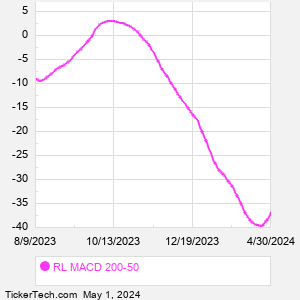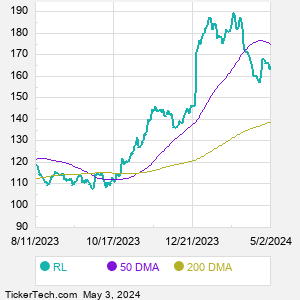Ralph Lauren designs, markets and distributes lifestyle products, including apparel, footwear, accessories, home, fragrances and hospitality. Co.'s brand names include Ralph Lauren, Ralph Lauren Collection, Ralph Lauren Purple Label, Polo Ralph Lauren, Double RL, Lauren Ralph Lauren, Polo Ralph Lauren Children, and Chaps, among others. Co. sells directly to consumers through its retail stores, concession-based shop-within-shops, and digital commerce operations. Co. licenses to third parties the right to access its trademarks in connection with the licensees' manufacture and sale of designated products, such as apparel, eyewear, and home. Co.'s segment are: North America, Europe, and Asia.
When researching a stock like Ralph Lauren, many investors are the most familiar with Fundamental Analysis — looking at a company's balance sheet, earnings, revenues, and what's happening in that company's underlying business. Investors who use Fundamental Analysis to identify good stocks to buy or sell can also benefit from RL Technical Analysis to help find a good entry or exit point. Technical Analysis is blind to the fundamentals and looks only at the trading data for RL stock — the real life supply and demand for the stock over time — and examines that data in different ways. One of those ways is to calculate a Simpe Moving Average ("SMA") by looking back a certain number of days. One of the most popular "longer look-backs" is the RL 200 day moving average ("RL 200 DMA"), while one of the most popular "shorter look-backs" is the RL 50 day moving average ("RL 50 DMA"). A chart showing both of these popular moving averages is shown on this page for Ralph Lauren. Comparing two moving averages against each other can be a useful visualization tool: by calculating the difference between the RL 200 DMA and the RL 50 DMA, we get a moving average convergence divergence indicator ("RL MACD"). The RL MACD chart, in conjunction with the chart of the moving averages, basically helps in visualizing how the moving averages are showing convergence (moving closer together), or divergence (moving farther apart). |



